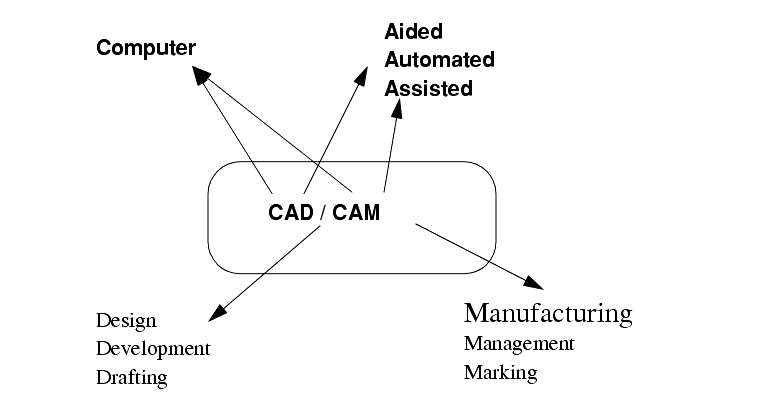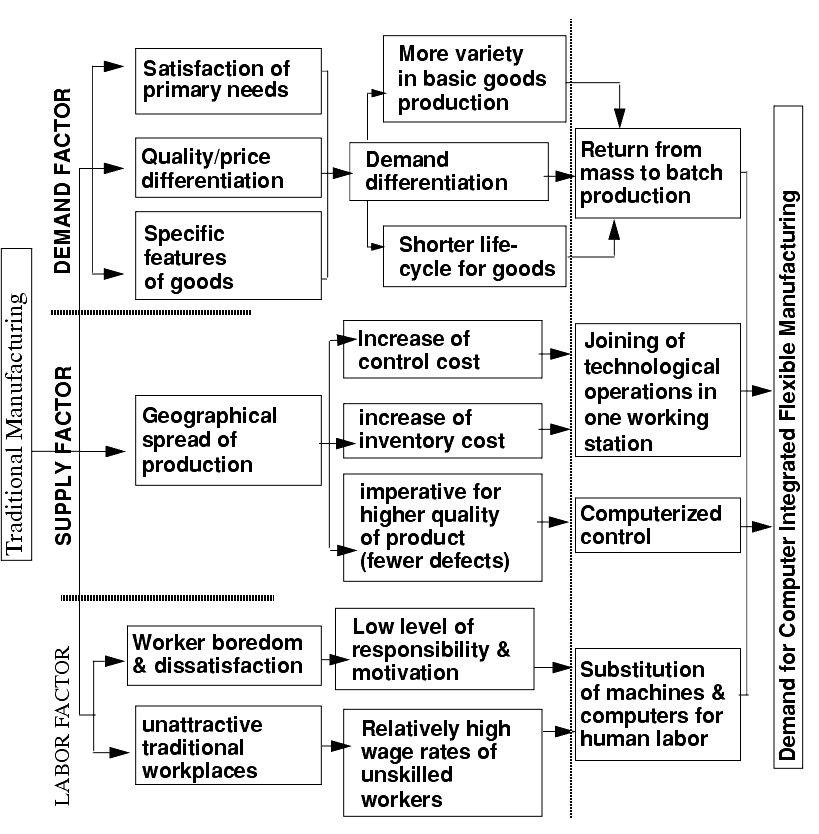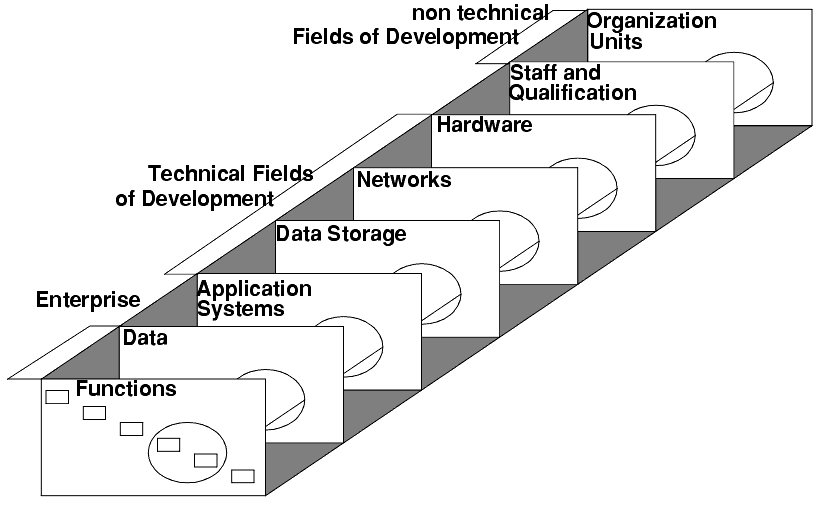
|
|
|
AC:2.2 THE BIG PICTURE
������������How Computers Can Be Used in an Automated Manufacturing System

CAE - Analysis of the design done in the CAD system for stresses, flows, etc. (often described as part of CAD)
CAM - Computer Aided/Automated Manufacturing - is the use of computers to select, setup, schedule, and drive manufacturing processes.
CAPP - Computer Aided Process Planning - is used for converting a design to a set of processes for production, machine selection, tool selection, etc.
PPC - Production Planning and Control - also known as scheduling. Up to this stage each process is dealt with separately. Here they are mixed with other products, as required by customer demand, and subject to limited availability of manufacturing resources.
Factory Control - On a minute by minute basis this will split up schedules into their required parts, and deal with mixed processes on a factory wide basis. (This is very factory specific, and is often software written for particular facilities) An example system would track car color and options on an assembly line.
Workcell Control - At this system level computers deal with coordination of a number of machines. The most common example is a PLC that runs material handling systems, as well as interlocks with NC machines.
Machine Control - Low level process control that deals with turning motors on/off, regulating speeds, etc., to perform a single process. This is often done by the manufacturers of industrial machinery.
AC:2.2.1 Acronyms
������������Acronyms make it possible to convey exact technical meaning in a quick efficient way. But, they also make it possible to confuse a subject with poorly defined terms

There are many acronyms involved with this book, such as CAPP, CIM, CAM, CAD, CAE, PPC, MRP, MRP-II, UNIX, DOS, CNC, DNC, etc.
AC:2.2.2 What is CAD/CAM?
������������Using computers for design and manufacturing
We computerize the easier tasks, which are tedious and mistake prone when done manually.
In CAD we design product geometries, do analysis (also called CAE), and produce final documentation.
In CAM, parts are planned for manufacturing (eg. generating NC code), and then manufactured with the aid of computers.
CAD/CAM tends to provide solutions to existing problems. For example, analysis of a part under stress is much easier to do with FEM, than by equations, or by building prototypes.
CAD/CAM systems are easy to mix with humans.
This technology is proven, and has been a success for many companies.
There is no `ONE WAY' of describing CAD/CAM. It is a collection of technologies which can be run independently, or connected. If connected they are commonly referred to as CIM
AC:2.2.3 What is the difference between CAD, CAM AND CIM
������������CAD/CAM involves the use of computers to make Design and Manufacturing more profitable.
Parts of CIM use CAD/CAM techniques and products to try and make the factory fully connected using computers.
The essential difference is CAD/CAM provides the tools, CIM is the philosophy which is used when organizing the computers, programs, etc. and all the information that flows between them.
Another way to think of CIM is that it allows the structure of an organization to be entered into the computers.
CIM focuses on connecting the various CAD/CAM modules.
AC:2.2.4 Examples of CAD/CAM Usage
������������An FMS is made out of CAD/CAM components (and can be PART of a CIM system).
The list below shows users of FMS in the U.S.A. The variety of applications illustrates that the technology may be used by any industry. The companies employing the technology show confidence in the technology.
[Source -- find]
Joints and Hoses components for military vehicles and rocket launch systems
The table below indicates the countries which are using the FMS technology. The countries with the higher numbers of FMS systems are also a sample of the major economic leaders. [Ayres et al, 1991, pg. 212, an estimate based on limited information]
[ source - find]
Driving forces of CIM/FMS are shown in the figure below

[ source - find]AC:2.2.5 Computer Integrated Manufacturing (CIM),
������������We should aspire to meet the ideals of CIM when designing CAD/CAM technology
Reference model for enterprise related CIM

[find source]
Search for More: |

Custom Search
|

|